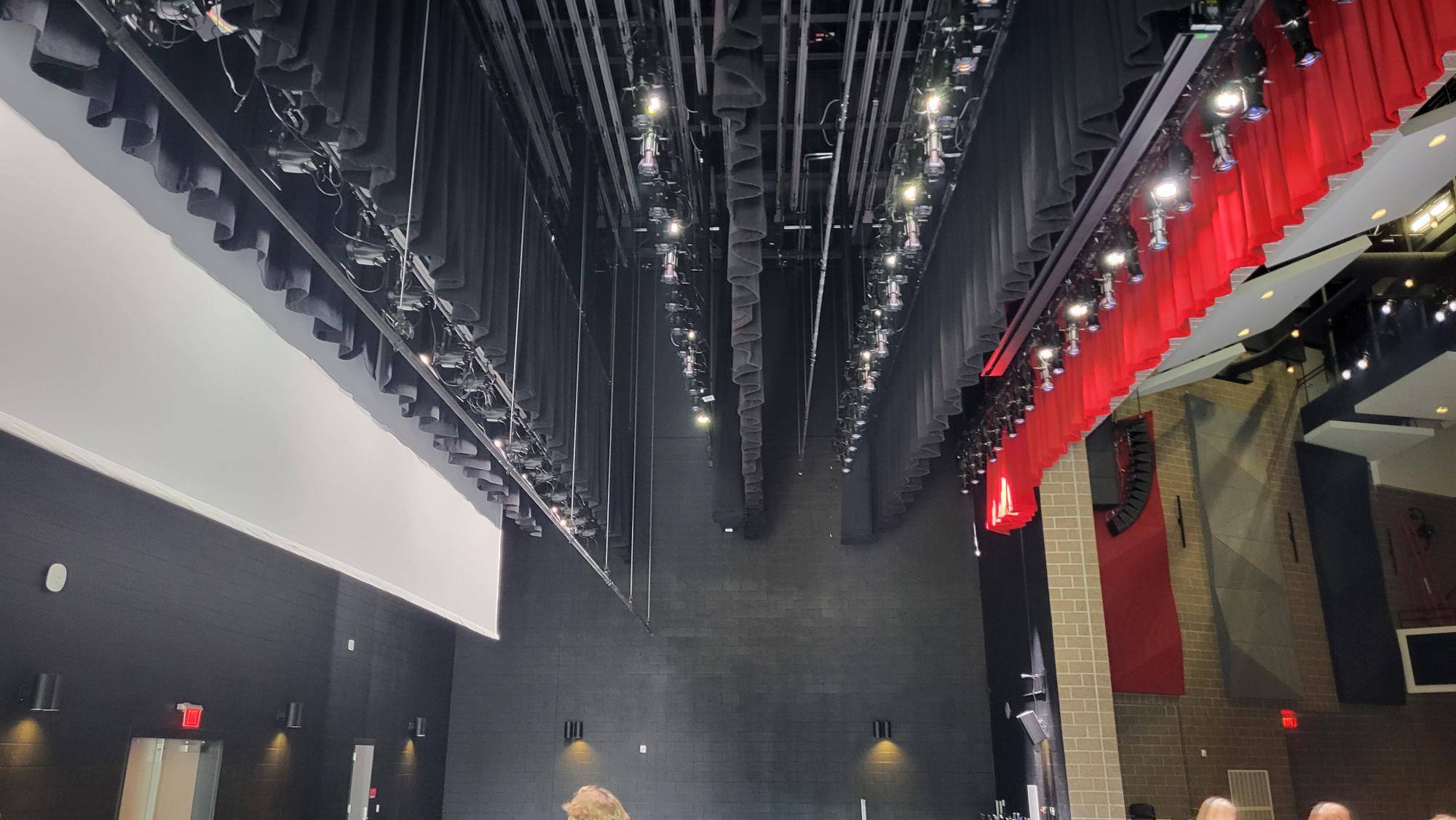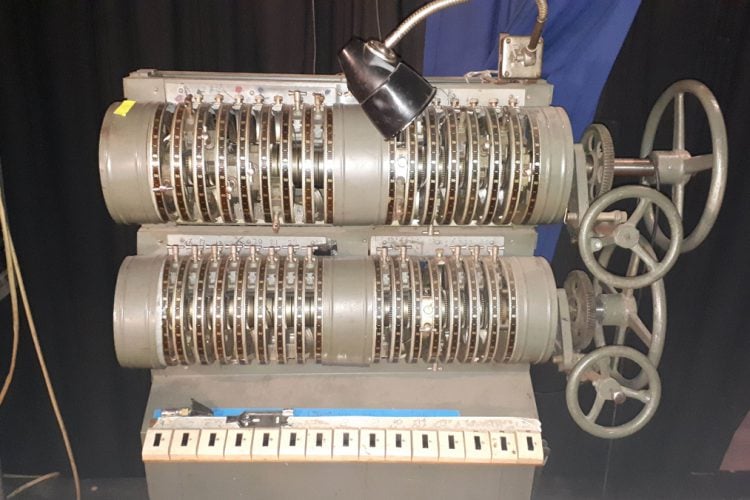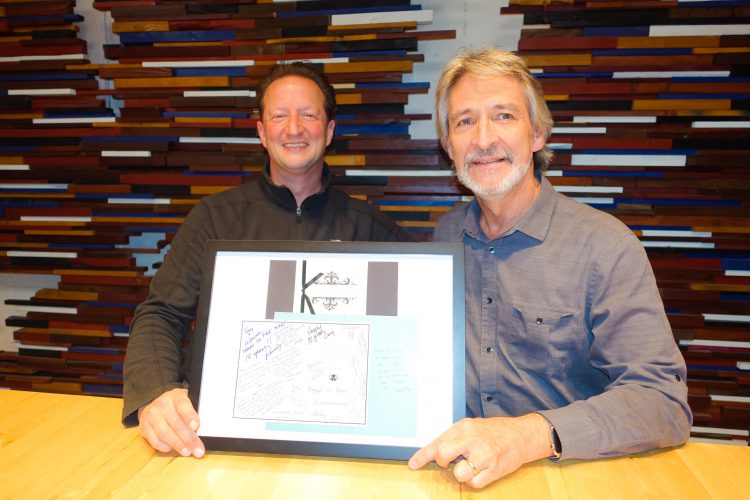What comes to mind when you picture the rigging from your high school theatre experience? A few overhead pipes tied off to wall-mounted cleats? If that is your memory, then you are not a graduate of the Utah school system.
Thanks to a healthy rivalry, forward-thinking designers and installers, plus ETC’s Prodigy automated rigging solution, high schools in Utah are getting an education in what rigging can do.
“In Utah, there is competition between the High Schools for the best-equipped stage setup. It’s like high school football rivalry – they want the newest and best for their school and regularly visit other schools to check out their systems,” says Tim Hansen of Oasis Stage Werks, based in Salt Lake City. With student bodies upwards of two thousand in many cases, the high school theatre programs can rival regional and national theatres in technology and attendance.
 Oasis Stage Werks is currently working on three schools in the Nebo school district in Utah, each specifying a fully-automated rigging system that would be the envy of many a professional theater. Each school will have a Prodigy system with 24 line sets driven by a QuickTouch+ Mk2 or Foundation controller. Other schools featuring systems with 30 line sets to support backdrops, scrims, and electrics are not uncommon.
Oasis Stage Werks is currently working on three schools in the Nebo school district in Utah, each specifying a fully-automated rigging system that would be the envy of many a professional theater. Each school will have a Prodigy system with 24 line sets driven by a QuickTouch+ Mk2 or Foundation controller. Other schools featuring systems with 30 line sets to support backdrops, scrims, and electrics are not uncommon.
A three-school project of this kind requires a strong team. Kurt Miller, principal at JRC Inc (The Lighting Solutions Company), ETC’s local representative explains the process.
“The architects (KMA Inc) wanted a system they could use for three high schools with a consistent spec,” says Miller. “We acted as an intermediary between the architect, the structural engineer and ETC, and worked closely with Greg Brenchley at BNA Consulting who did the entire electrical layout for the project. We were happy to bring all the right people into the mix at an early stage.”
With a strong background in theatrical lighting, Greg Brenchley at BNA Consulting played a key role in the process. Brenchley was able to make the stage rigging part of Construction Section 11, avoiding the need to involve an electrical contractor who would not be familiar with rigging systems.
Working with the architect, BNA provided all the design drawings not only for the rigging but for the entire electrical system for each school.
“School districts are getting more elaborate but with a strong emphasis on safety and reliability,” says Brenchley. “We were able to convince the school district that an ETC system would meet their long-term goals.” It also helped that JRC has worked closely with Jerry Kraft, ETC’s Rigging Sales Manager for the West, on a lot of retrofits where ETC rigging systems have replaced outdated technology.



As always, costs are a huge consideration for systems. Given that motorized rigging can cost at least twice as much as conventional counterweight systems, Hansen does all he can to make sure no budget surprises pop up any place else. He makes it a point to contact the architects and structural engineers early in the planning stage to make sure everything necessary is in the plans and there won’t be any unexpected (and expensive) revisions later on.
“With better communication, we can ensure we get the roof steel located in the right place for us,” he explains.
More budget helps comes with the cost savings ETC Prodigy hoists allow in a building’s structure, especially when using the compression tube system. Without the need for bracing against lateral loads, the building’s steel superstructure can be much simpler than traditional rigging systems.
When it comes to running a rigging system after installation, both Kraft and Hansen stress that safety is their first concern. With each system comes a strict training regimen for teachers and students, with follow-ups upon request. “I regularly conduct rigging seminars for schools at local regional trade shows,” says Hansen. Safety is also built into Prodigy, too. The Prodigy controllers are designed with advanced safety features that include annual inspection reminders, automatic self-tests for all safety circuits, and motor load profiling that detects unusual load conditions.
Kraft appreciates how designers and architects are being proactive to provide the safest systems for the students, even at higher initial costs. “ETC controls are all about ease of use by a wide range of skill levels in a theatre. The ETC Foundation controller was chosen for the schools as it allows for multiple user logins, each with a level control corresponding to that user’s skill level.” Kraft is hoping that other school districts in other States will follow Utah’s example in creating the finest high school backstage experience for their students.





